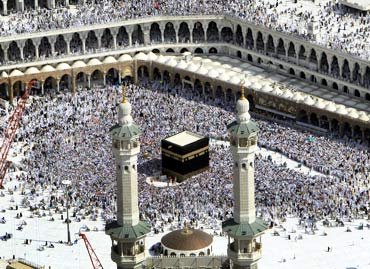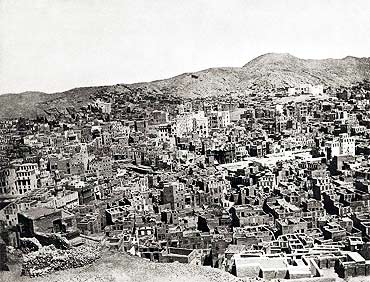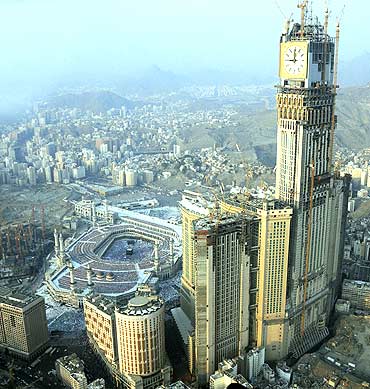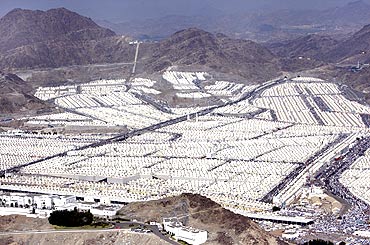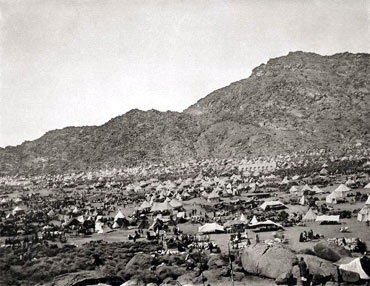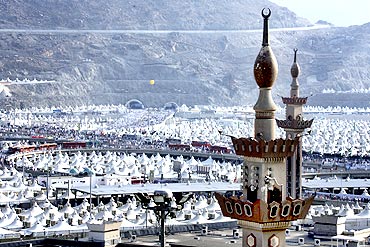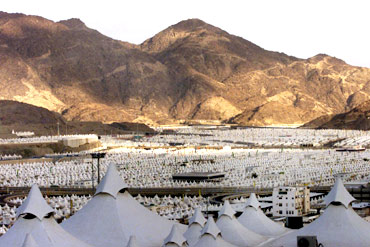 | « Back to article | Print this article |
Haj THEN and NOW: 125 years apart
An exhibition of rare 1885 photographs that capture Mecca in a past is on in Dubai. Dutchman Christiaan Snouck Hurgronje took the images on wax cylinders then newly invented by Thomas Edison.
We took some of the shots taken by Snouck and assessed the transformation of the holiest place on earth for Muslims.
This image of the Kaaba -- a building known to Muslims as the holiest place on earth -- taken from a hillside is barely recognisable.
Click on NEXT to see how how Kaaba has evolved...
Haj THEN and NOW: 125 years apart
Click on NEXT to see More...
Haj THEN and NOW: 125 years apart
Image: Another view of the big mosque during a samalat
Click on NEXT to see a close-up of the grand mosque today...
Haj THEN and NOW: 125 years apart
Click on NEXT to see more...
Haj THEN and NOW: 125 years apart
Image: Snouck's photograph of Mecca in 1885
Click on NEXT to see today's Mecca...
Haj THEN and NOW: 125 years apart
Click on NEXT to read further...
Haj THEN and NOW: 125 years apart
Image: Snouck's photo on the tomb of Sittana Maimuna, the wife of the Prophet, during the Haj
Click on NEXT to see how it looks today...
Haj THEN and NOW: 125 years apart
Click on NEXT to read further...
Haj THEN and NOW: 125 years apart
Image: View on the eastern part of the Mina valley during the Haj
Click on NEXT to see how the area looks today...
Haj THEN and NOW: 125 years apart
Click on NEXT for more...
Haj THEN and NOW: 125 years apart
Al-Ghaffar continued sending his images to Snouck in The Netherlands. Many of the photographs were originally credited solely to Snouck but they are now jointly credited, with experts unable to tell who shot what.
The images, archived by Leiden University Library, were published four years after Snouck's trip. Original copies of the album now sell for about $45,000, according to the gallery.
Image: View on Muzdalifa, the Haj stop-over place between Mina valley and Mt Arafat
Click on NEXT to see how the place looks today...
Haj THEN and NOW: 125 years apart
Click on NEXT for MORE...

